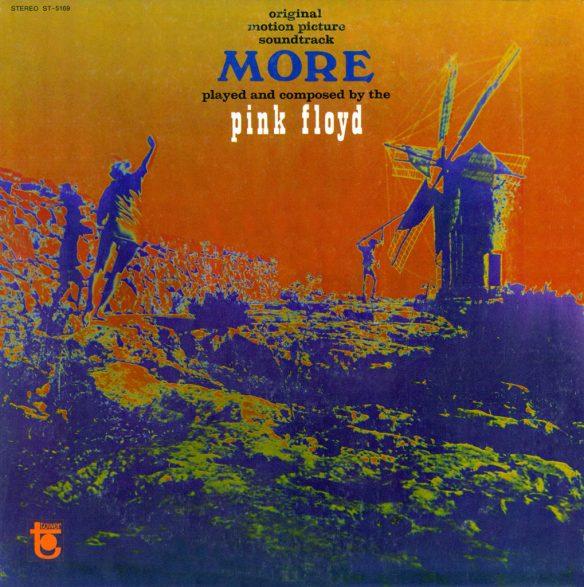I was reminded the other day of the Balearics hippie tradition. Mostly associated with Ibiza, this reminder came from a news report in the Bulletin in July 1970. It read: "According to reports from the neighbouring island, local hippies were invited by the police to wash themselves and clean up before attending the recent wedding between the Princesa Inmaculada de Borbón-Dos Sicilias and Don Miguel García Sáez. Apparently some of them agreed to the conditions and attended the wedding. The two 'hippies' in the photo are of the weekend variety. They donned their garb for the weekend."
Defining a hippie wasn't straightforward. One could recognise what looked like a hippie, as I was to discover in Bournemouth during the Summer of Love, as there were the tell-tale bells, flowers and a fair amount of hair. But they could always have been the weekend variety or perhaps the fortnight holidaymaking variety. Students from the LSE or such like who had saved up with brief summer jobs doing un-hippie things like a night shift at a meat-packing factory.
And there were those who appeared to be hippies but may not have been. Were members of Soft Machine or Pink Floyd hippies or did they simply apply the uniform trappings of the time? In the case of the Floyd, they've always maintained that they weren't. They, like Soft Machine, were musical mystics of psychedelia, albeit there were the drugs, acid in particular, which was at least partly the undoing of Syd Barrett.
If we place the hippie movement as having morphed from a one-time Beat Generation bohemia in Haight-Ashbury some time in 1965, then could members of what was to become Soft Machine have classified themselves as hippies when they first started to come to Deya? No, not really. Robert Wyatt stayed at Robert Graves' place in summer 1964, and that was his second visit. Daevid Allen and Kevin Ayers were first in Deya well before Soft Machine formed in mid-1966.
Both Allen and Ayers were to become identifiable as hippies, one guesses, and the acid was a constant companion. When he stayed with Graves in 1966, Daevid Allen explained that he took some particularly strong LSD and had a vision of himself as a rock musician playing at what, he reckoned, was to become the Glastonbury Festival. Five years later, he did indeed appear at Glastonbury, which was then a very different event, and it was without Soft Machine - he had long left the band and formed Gong.
The Floyd trod a different path, and it was to Formentera, where the newly developing hippies of Europe were beginning to descend, as they were in Ibiza. The regime appeared to tolerate them. If there were going to be hippies, it was best that they were confined to islands and weren't corrupting the youth of mainland cities. In Formentera in particular, they were mostly out of sight and mind, where the regime was concerned anyway. It remains a peculiarity of sixties counterculture that authoritarian, right-wing regimes turned much of a blind eye. After the colonels staged their coup in Greece in 1967 and started torturing Greek citizens, the hippies in Crete and Mykonos were left alone. Islands seemed to have their advantages.
It was 1966 when Roger Waters first went to Formentera. The following summer the story gets somewhat muddled. It's a matter of record that Rick Wright took Syd to Formentera in order to try and straighten him out. This was in the August when the band's gigs were cancelled because of the state that Syd was in. Roger Waters was in Ibiza at the same time and visited Formentera, or so it has been said. Yet Aubrey Powell, a co-founder of the Hipgnosis graphic design company (responsible for Pink Floyd album cover artwork) and close friend of the band members, said that Syd, Roger Waters and Rick Wright plus their girlfriends all went to Formentera that August and stayed for a month. With them was Sam Hutt, otherwise known as country and western musician Hank Wangford. After he had attended medical school in Cambridge, Hutt became known in the 1960s for his practice where he treated drug addicts. This was to bring him into contact with the rock scene in London.
The band's association with Formentera goes beyond the visits. The film "More" was released in 1969. It arguably captured the hippie era better than any other film of the time did. The soundtrack was composed and performed by Pink Floyd, now with David Gilmour as a full-time member, Syd having gone in early 1968. Although the locations are always listed as having been in Ibiza, it was a Formentera location that was to inspire the cover artwork for the album. The eery image is that of a windmill in Formentera, the Molí Vell de la Mola.
For the sixties' hippies, whether they were really hippies or not, Formentera provided a perfect place of calmness and peace. And right now, given that the island has been barely affected by the virus, Formentera is once again such a haven. Only this time it won't be on a hippie trail.


No comments
To be able to write a comment, you have to be registered and logged in
Currently there are no comments.